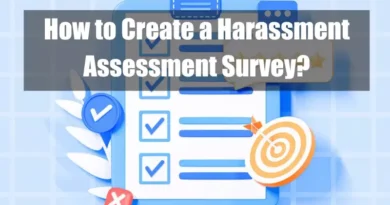Understanding Harassment Reporting Mechanisms
Takeaways
| Key Points |
|---|
| Harassment, pervasive in its impact, necessitates accessible and effective reporting mechanisms to foster safety and accountability. |
| These mechanisms empower individuals by offering formal channels like law enforcement, workplace HR, educational institutions, and professional bodies, which address complaints with structured processes and enforce consequences for misconduct. |
| Informal avenues, such as trusted friends, support groups, and mental health professionals, provide emotional backing and practical guidance, while online platforms offer anonymity and evidence documentation tools. |
| Initiating a report involves gathering evidence, selecting an appropriate channel, and preparing for the procedure, all while seeking emotional support to navigate challenges. |
| The investigation process includes fact-finding, interviewing witnesses, and determining outcomes ranging from disciplinary actions to legal recourse or restorative justice. |
| Safeguarding complainants through confidentiality, anti-retaliation policies, and access to resources ensures their well-being and encourages others to come forward, ultimately building a safer, more accountable community. |
Let’s discuss in detail:
Introduction
Harassment, in its various forms, casts a long shadow on individuals and communities, wreaking havoc on well-being, productivity, and overall safety. Fortunately, harassment reporting mechanisms are a crucial weapon against this scourge. These avenues empower individuals to raise their voices, seek accountability, and pave the way for a safer future.
While harmful behaviors like physical, verbal, emotional, and online harassment can lead to anxiety, depression, and other harmful consequences, robust and accessible harassment reporting mechanisms empower individuals to hold perpetrators accountable, protect themselves and their communities, and access crucial support resources.
Despite facing various barriers, these mechanisms provide a voice for those silenced and pave the way for a safer future free from harassment.
Despite the empowering potential of harassment reporting mechanisms, fear of retaliation, complex procedures, societal stigma, and lack of trust in systems can often silence individuals. Recognizing these barriers is key to designing accessible, supportive mechanisms that ensure a voice for everyone experiencing harassment.
Types of Reporting Channels

Harassment, unfortunately, can occur in diverse settings, demanding a variety of reporting channels to cater to unique needs and circumstances. Understanding the available options empowers individuals to choose the most suitable path to seek redress and justice.
A. Formal Channels: Institutional Safeguards
Formal channels represent established avenues within institutions or legal frameworks designed to handle complaints and enforce policies against harassment. These channels offer structure, documentation, and potential legal ramifications for perpetrators. They include:
1. Law Enforcement:
Reporting to law enforcement, particularly in cases of physical assault or online threats, triggers an official investigation and potential criminal charges against the perpetrator.
2. Workplace HR:
Organizations often have dedicated Human Resources departments equipped to handle workplace harassment complaints. HR investigations follow internal policies and procedures, leading to disciplinary actions or termination of the harasser.
3. Educational Institutions:
Schools and universities have student conduct offices or ombudsmen to address student-on-student or staff-on-student harassment. Investigations can lead to disciplinary actions, suspensions, or even expulsions.
4. Professional Bodies:
Many professional organizations have established ethical codes and complaint mechanisms to address misconduct within their fields. Reporting through these channels can lead to professional sanctions or career consequences for the harasser.
B. Informal Channels: Building Support Networks
Formal channels are not always the preferred or accessible option for everyone. Informal channels offer alternative avenues for raising concerns and finding support, often before or alongside formal complaints. These channels can be particularly valuable for building trust and navigating the emotional aspects of the experience. They include:
- Trusted Friends and Family: Sharing experiences with a close confidante can provide emotional support, validation, and advice on further steps.
- Support Groups and Advocacy Organizations: Connecting with groups specifically focusing on the type of harassment experienced can offer invaluable peer support, resources, and guidance.
- Mental Health Professionals: Seeking counseling or therapy can provide essential support in dealing with the emotional impact of harassment, fostering coping mechanisms, and navigating the journey towards healing.
C. Online and Technology-Based Platforms:
The digital age has ushered in a new era of reporting mechanisms. Online platforms and mobile apps are emerging as innovative tools for reporting harassment, particularly in online spaces. These platforms offer advantages like:
- Anonymity and discretion: Reporting through online platforms can provide a degree of anonymity for individuals hesitant to disclose their identities publicly.
- Accessibility and convenience: Online platforms are often accessible 24/7, removing geographical barriers and simplifying the reporting process.
- Data and evidence gathering: Some platforms offer automated tools for documenting and preserving evidence, such as screenshots or online conversations.
While offering promising advantages, it’s crucial to critically assess the credibility and security of online platforms before utilizing them for reporting sensitive experiences.
Understanding the diverse landscape of reporting channels empowers individuals to choose the avenue that best fits their needs and comfort levels. Whether formal or informal, online or offline, each channel provides pathways to healing, accountability, and a safer future.
Initiating a Report: Taking the First Step
Harassment can leave individuals feeling overwhelmed and unsure of how to proceed. This section will guide you through the crucial steps of initiating a report, empowering you to navigate the process clearly and confidently.
A. Gather Evidence and Documentation
Gathering evidence strengthens your report and supports its validity. Depending on the type of harassment and the chosen reporting channel, evidence can include:
- Physical evidence: Photos of injuries, damaged property, or any tangible incident evidence.
- Written documentation: Emails, text messages, social media posts, or any written communication with the perpetrator.
- Witness accounts: Contact information or statements from individuals who witnessed the harassment.
- Dates and times: Keep a record of specific dates and times of the incidents for accurate reporting.
Remember to gather evidence discreetly and safely, ensuring your own well-being is prioritized.
B. Choose the Appropriate Reporting Channel
Understanding the strengths and limitations of different channels is crucial for making an informed decision. Consider factors like:
- Severity of the harassment: Law enforcement might be the most appropriate avenue for serious incidents involving physical harm or threats.
- Comfort level with anonymity: Choose a channel that aligns with your preference for confidentiality.
- Desired outcome: Reporting through institutional channels might be most effective if seeking formal disciplinary action.
Consulting with trusted advisors or relevant resources can further guide your decision-making process.
C. Prepare for the Reporting Process
Before engaging with the chosen reporting channel, take time to:
- Review reporting procedures: Familiarize yourself with the specific steps and documentation required for your chosen channel.
- Practice verbalizing your experience: Rehearsing your account can help you feel more confident and prepared during the reporting process.
- Seek emotional support: Connect with trusted individuals or support groups to bolster your emotional strength and navigate the potential challenges ahead.
Remember, you are not alone in this journey. Seek support and prioritize your well-being throughout the process.
Investigation and Seeking Resolution and Accountability

Once a report is filed, the wheels of investigation and follow-up begin to turn. This section delves into the process that unfolds after making your voice heard, outlining the steps toward resolution and accountability.
A. Fact-Finding and Evidence Gathering
Following the receipt of your report, the designated authority responsible for the investigation commences the fact-finding process. This may involve:
- Interviews with the complainant: You will be asked to provide a detailed account of the harassment, including specific details, dates, witnesses, and evidence you gathered.
- Contacting witnesses: If provided, witness accounts will be collected to corroborate your report and provide additional perspectives on the incident.
- Gathering additional evidence: Depending on the nature of the complaint, further evidence, such as emails, social media posts, or security footage, may be obtained.
Remember, throughout the investigation, you have the right to be informed of the process, ask questions, and provide additional information as needed.
B. Interviewing Witnesses and Parties
Depending on the reporting channel and complexity of the case, interviews may be conducted with individuals identified as witnesses or involved parties. This can be a daunting experience, but remember:
- You have the right to confidentiality: Emphasize your need for privacy and request assurances during the interview process.
- Be accurate and factual: Provide clear and truthful information about the incident.
- Seek support: Having a trusted friend or advocate present during the interview can offer emotional support and ensure your comfort.
Cooperating with the investigation while prioritizing your well-being is crucial in seeking just outcomes.
C. Determining Outcomes and Consequences
The investigating authority will conclude and determine appropriate outcomes based on the gathered evidence and interviews. This may involve:
- Disciplinary action: In formal channels like workplaces or educational institutions, disciplinary actions like reprimands, suspension, or termination might be taken against the perpetrator.
- Legal action: In criminal misconduct cases, law enforcement may pursue legal charges against the perpetrator.
- Restorative justice measures: Some channels may facilitate communication and reconciliation between the involved parties.
- Dismissal of the complaint: If insufficient evidence is found, the complaint may be dismissed. However, the complainant should still have access to resources and support.
It’s important to remember that the path toward resolution can be complex and may only sometimes align with your desired outcome. Seek support from trusted individuals or advocate for your needs throughout the process.
Protecting Complainants: Prioritizing Safety and Well-being
Reporting harassment can be an emotionally taxing experience, and safeguarding the complainant’s well-being throughout the process is paramount. Here are some crucial measures that should be implemented:
Confidentiality and Privacy: Respecting the complainant’s right to privacy is fundamental. Information about the complaint and the individuals involved should be treated with utmost confidentiality, minimizing the risk of public exposure or unwanted attention.
Non-Retaliation Policies: Fear of retaliation is a significant barrier to reporting. Robust non-retaliation policies and procedures must be in place to protect the complainant from any form of reprisal or negative consequences from the perpetrator or their associates.
Support Services and Resources: Complainants need access to comprehensive support services throughout the reporting journey. This can include counseling, legal aid, advocacy groups, and emotional support networks to help them navigate the emotional and practical challenges they might face.
Ensuring a safe and supportive environment for complainants empowers them to come forward and seek justice.
By prioritizing these measures, we can cultivate a culture where individuals feel protected and empowered to speak up against harassment.
FAQ
What is Anonymous Reporting in the context of workplace harassment?
Anonymous reporting allows individuals to report harassment without revealing their identity. This mechanism encourages victims or witnesses to come forward without fear of retaliation, fostering a safer reporting environment. Implementing secure, anonymous reporting tools has led to increased reporting rates in organizations, as employees feel more protected when their identities remain confidential.
How does a Hostile Work Environment relate to harassment?
A hostile work environment occurs when unwelcome conduct based on protected characteristics, such as sex, race, or religion, is severe or pervasive enough to create an intimidating, hostile, or abusive work atmosphere. This can interfere with an individual’s work performance and is considered a form of harassment under various laws.
What constitutes Retaliation in harassment cases?
Retaliation involves adverse actions taken against an individual for reporting harassment or participating in an investigation. Such actions can include demotion, dismissal, or other negative employment consequences. Anti-retaliation policies are essential to protect employees and encourage reporting.
How can Decentralized Ledger Technology (DLT) enhance harassment reporting?
DLT, including blockchain, offers a secure and transparent framework for managing feedback and reporting systems. Organizations can use a decentralized ledger to ensure that reports are tamper-proof, enhancing confidentiality and trust in the reporting process. Access to these reports can only be restricted to authorized personnel, fostering greater confidence in the system’s integrity.
What role do AI-driven analytics play in detecting workplace harassment?
AI-driven analytics involve using artificial intelligence to analyze data patterns, which can help in the early detection of harassment trends. By monitoring communication channels and identifying concerning behaviors, AI tools enable proactive measures to prevent escalation, thereby enhancing workplace safety.
How do Chatbots and Virtual Assistants assist in harassment reporting?
AI-driven chatbots and virtual assistants offer 24/7 support to employees dealing with harassment or other concerns. These tools can guide users through company policies, assist with the reporting process, and direct them to appropriate resources. While their emotional support capabilities are limited, they are valuable for providing immediate assistance.
What benefits do Wellness and Mental Health Apps provide to harassment victims?
Mental health apps designed to support victims of harassment offer features such as anonymous counseling, stress management tools, and access to emergency contacts. These features provide immediate support, assisting victims in managing the psychological aftermath of harassment. Many apps, such as BetterHelp and Talkspace, offer confidential therapy sessions with licensed professionals, which have been positively reviewed by users who lack access to traditional therapy.
How do Online Support Communities aid individuals experiencing harassment?
Online communities provide platforms for victims to share their experiences and receive support from peers who have faced similar situations. These communities foster a sense of belonging and empowerment, helping individuals heal by connecting with others in a supportive environment. Such spaces can be vital for emotional recovery, creating a network of support for those dealing with trauma.
What is a Centralized Incident Reporting System in the context of harassment?
A centralized incident reporting system consolidates all reports of harassment into a single platform, ensuring consistency, confidentiality, and compliance. This approach facilitates efficient tracking and management of cases, reducing the risk of fragmented reporting and enabling timely interventions. It also helps build trust among employees, as they are assured that their concerns are handled systematically.
How do Third-Party Reporting Services function in harassment cases?
Third-party reporting services provide an external platform for employees to report harassment, ensuring neutrality and confidentiality. These services can enhance trust in the reporting process, as employees may feel more comfortable reporting to an independent entity rather than internal personnel. This approach can lead to more accurate reporting and effective resolution of issues.
Why are Confidentiality Protocols important in harassment investigations?
Confidentiality protocols are guidelines that ensure the details of harassment reports are disclosed only to individuals directly involved in the investigation. Maintaining confidentiality protects the privacy of all parties, encourages reporting, and prevents potential retaliation or workplace gossip. Clear protocols demonstrate an organization’s commitment to handling complaints with discretion and integrity.
What is Mediation, and how does it apply to harassment complaints?
Mediation is an informal approach to resolving harassment complaints through facilitated discussions between the involved parties. A neutral mediator assists in reaching a mutually acceptable resolution, aiming to address the issue without formal disciplinary action. This process can be beneficial when both parties are willing to communicate and resolve the matter amicably.
What are the investigation protocols for harassment cases?
Investigation protocols are structured procedures that organizations follow when examining harassment complaints. These protocols ensure a thorough, impartial, and timely investigation, including interviewing involved parties, reviewing evidence, and documenting findings. Clear protocols help maintain fairness and transparency throughout the investigative process.
How do Whistleblower Protections relate to harassment reporting?
Whistleblower protections are policies that safeguard individuals who report misconduct, including harassment, from retaliation. These protections encourage employees to come forward with information about unethical behavior without fear of adverse consequences, thereby promoting a culture of accountability and integrity within the organization.
What purpose do Reporting Hotlines serve in addressing workplace harassment?
Reporting hotlines are dedicated phone lines that allow employees to report harassment confidentially. Often managed by third-party providers, these hotlines operate 24/7, providing a convenient and secure channel for employees to voice their concerns. They play a crucial role in organizations’ harassment reporting mechanisms by ensuring accessibility and confidentiality.









